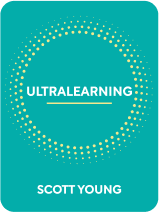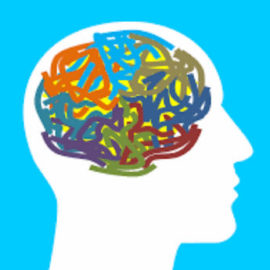

This article is an excerpt from the Shortform book guide to "Ultralearning" by Scott Young. Shortform has the world's best summaries and analyses of books you should be reading.
Like this article? Sign up for a free trial here .
Are you looking for Ultralearning book exercises? How can applying Scott Young’s ultralearning technique help you learn both faster and more effectively?
Ultralearning is the technique that Scott Young created to help people upgrade their skills for both personal and professional development. Here, we have put together Ultralearning book exercises to help you implement the ultralearning method in your own life.
Continue on for Ultralearning book exercises.
Ultralearning Book Exercises and Reflection Prompts
At one point, getting a simple bachelor’s degree was sufficient for getting and maintaining a good job. Now, a standard education is not quite enough: The modern workplace is constantly changing, asking more and more of its professionals. Not everyone has access to resources for formal education, and the upgraded skills required in the workforce are not easy to pick up as you go. In Ultralearning, Scott Young teaches you how to create self-directed learning projects to stay relevant in your field, advance your career, and master any skill you desire with nine core learning principles.
Below are some Ultralearning book exercises we have created from Scott Young’s book:
Learn How to Learn
This exercise is an opportunity to think about a potential learning project and explore the questions “why,” “what,” and “how?”
- What is a skill or topic you would like to learn?
- Why do you want to learn this topic or skill? Is your motivation intrinsic or instrumental? How so?
- What do you need to learn in order to master your skill or topic? Make a list below of your facts, concepts, and procedures.
- Review your lists. What are the areas you expect to have the most difficulty in?
- Consider the benchmarking method. Who has already learned and mastered your skill or topic? What are some methods these people have used to learn? Which methods resonate with you?
Practice the 10% Rule
Explore the optimal balance between planning and learning. Have a learning topic or skill in mind as you work through the questions.
- How long do expect the learning process to take overall? What might that look like in a daily or weekly schedule?
- What is 10% of that time? What might that condensed time look like in a daily or weekly schedule?
- How will you spend that time to get the most out of your metalearning?
Overcome Learning Obstacles
Consider a skill or learning topic (either the same you’ve used for previous exercises or a new one) and explore potential obstacles in the learning process, as well as determine the characteristics of an optimal study environment.
- What strategies can you use to overcome procrastination?
- What kinds of distractions do you expect to struggle most with? Environment? Stress?
- What kinds of solutions can you apply to overcome your distractions?
- Will you be learning complex or simplistic tasks? How might you create the optimal learning environment for yourself?
Practice Direct Learning
Reflect again on the task or topic you’re learning (you may select a new one if you’d like). Use this exercise to explore direct learning methods that best suit your needs as a learner and support your learning goals.
- Of the four tactics listed (learning projects, immersion, simulation, or overachievement), which might best apply to your learning goals? Why?
- With those tactics in mind, what is one specific way you can practice directly learning your task or topic?
Create a Drill
Consider your learning goals and review the drilling methods available to you (segmentation, replication, concentration, and chaining) to determine solutions for any areas of your process that need work.
- Which aspects of what you’re learning are most challenging? Which are most important to the overall skill or topic?
- Of the drilling methods (segmentation, replication, concentration, and chaining), what are two you might select to address the aspects? Why?
- Describe how you’ll apply one of the drilling methods in practice today.
Test Yourself
Reflect on your chosen topic or skill (or something you’re interested in learning) and contemplate which aspects are most important to retain long-term.
- What information do you think is most valuable to retrieve? Why?
- What are some ways you might test yourself? Flashcards? A project?
- Practice recall below by writing everything you know about your topic or skill so far.
Get Feedback
Reflect on the 3 core types of feedback (outcome, informational, and corrective).
- Considering your topic or skill, what is one way you can get outcome feedback (detail-less feedback based entirely on results)?
- What are two ways you can get information feedback (solutionless feedback on what isn’t working)?
- What are two ways you can get corrective feedback (feedback that tells you both the problem and solution)?
Improve Retention
Reflect on the 4 core retention strategies (overlearning, spacing, proceduralization, and mnemonics). Consider your learning goals and contemplate the strategies that may serve them best.
- Choose one of the strategies that resonate with you. What is one way you can practice this strategy with your learning goals in mind?
- Choose a second strategy. What is one way you can use this strategy to support your learning goals?
Practice the Feynman Technique
Reflect on your topic or skill and identify an aspect you have some confidence in your understanding of.
- How well do you feel you understand this aspect? Write about your understanding of it in as much detail as possible.
- Now write about the aspect again, but this time, write about it as though you are teaching it to someone else.
- If possible, draw a visual representation of the aspect below.
- Compared to the beginning of this process, how deeply do you feel you understand the aspect now?
Experiment With Replication
Reflect on the 1st avenue of experimentation, “Replicate.”
- Think about your chosen topic or skill. What’s one method from others who have mastered your topic or skill?
- Select one method and spend 20 minutes practicing it. How did practicing that method impact your understanding of the topic or skill?
- Select a second method and spend another 20 minutes practicing. How did the practice impact your learning? Did it have a different effect than the previous method? If yes, how so? If not, what is something valuable you can take away from the experience?
Explore Extremes
Reflect on the 5th avenue of experimentation, “Explore the Extremes.”
- Consider your topic or skill, and identify the most common ways of approaching or practicing it. What are some “outside the box” ways you can alter that approach?
- Select one of the new approaches and practice it for 20 minutes. What are some insights you discovered from the experience?

———End of Preview———
Like what you just read? Read the rest of the world's best book summary and analysis of Scott Young's "Ultralearning" at Shortform .
Here's what you'll find in our full Ultralearning summary :
- How a formal education doesn’t open the doors it once could
- The 9 core principles that can help you master any skill
- How to create a self-directed learning project to help you advance in your field






